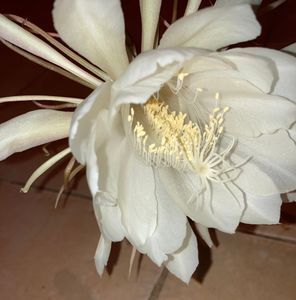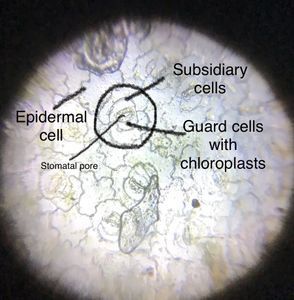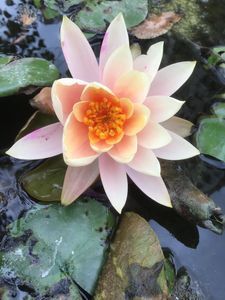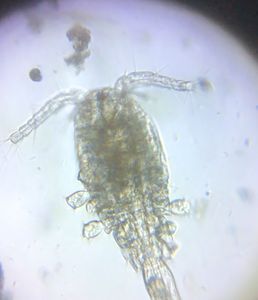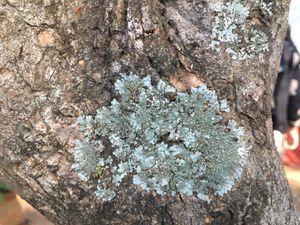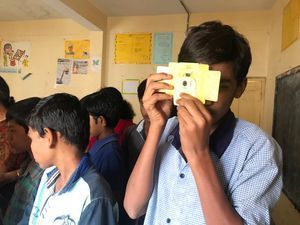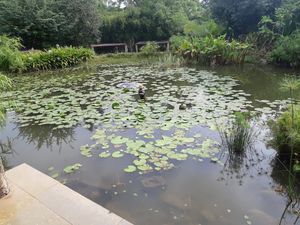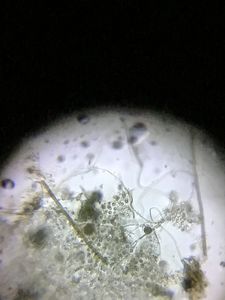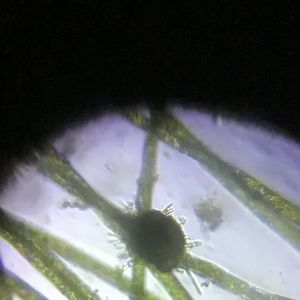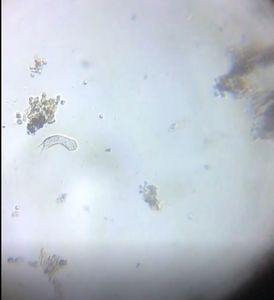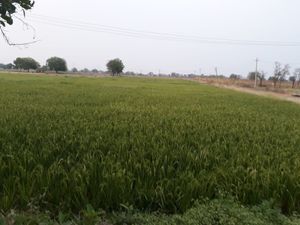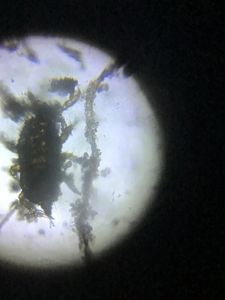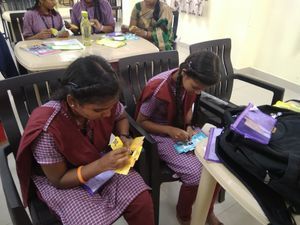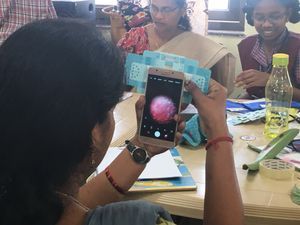Leaf surfaces of dicots
 Nov 06, 2018 • 4:37 AM UTC
Nov 06, 2018 • 4:37 AM UTC Unknown Location
Unknown Location 140x Magnification
140x Magnification Microorganisms
Microorganisms
TCIS Outreach
We are a group of students, volunteers and staff working with TIFR Hyderabad's Science Education and Outreach program: http://www.tifrh.res.in/~outreach/
39posts
26comments
2locations
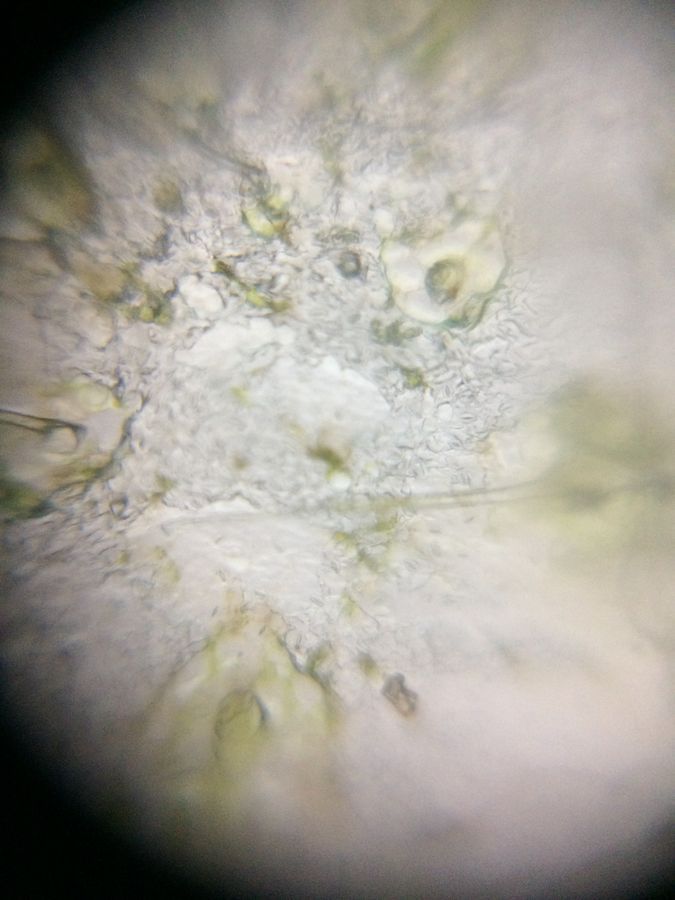
As promised, here is the second part of my garden expedition at my sister’s place, in which I explored the leaf surfaces of dicot and monocot plants. I selected four dicot plants to observe stomata: tomato ( Solanum lycopersicum ), coatbuttons ( Tridax procumbens ), spinach ( Spinacia oleracea ) and chilli peppers ( Capsicum annuum ).

Dicot plants: tomato, coatbuttons, spinach and chilli peppers. Here is a comparative figure for the upper and lower epidermis of the four dicot plants, which I observed through the foldscope.

Upper and lower epidermis of tomato and spinach leaves
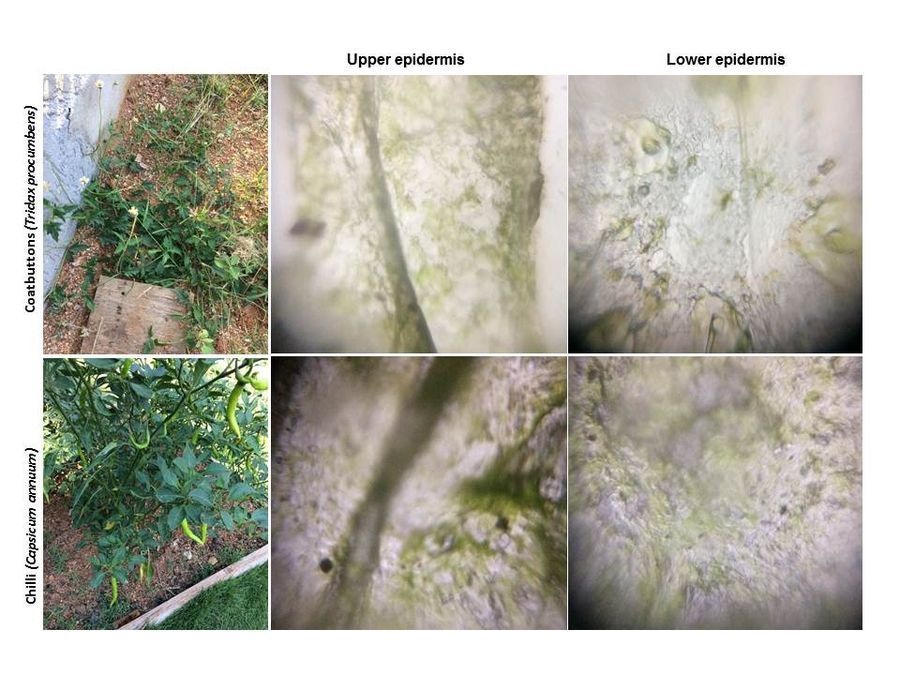
Upper and lower epidermis of coatbuttons and chilli peppers In dicots, it is known that stomata are distributed irregularly in the lower epidermis and the guard cells are bean shaped. I too found that the guard cells were bean shaped, but I found the stomata of tomato and chilli leaves distributed all over the upper and lower epidermis. Further, I saw trichomes on both upper and lower epidermis of tomato and chilli leaves. It puzzled me, whether again these were exceptional cases or not!
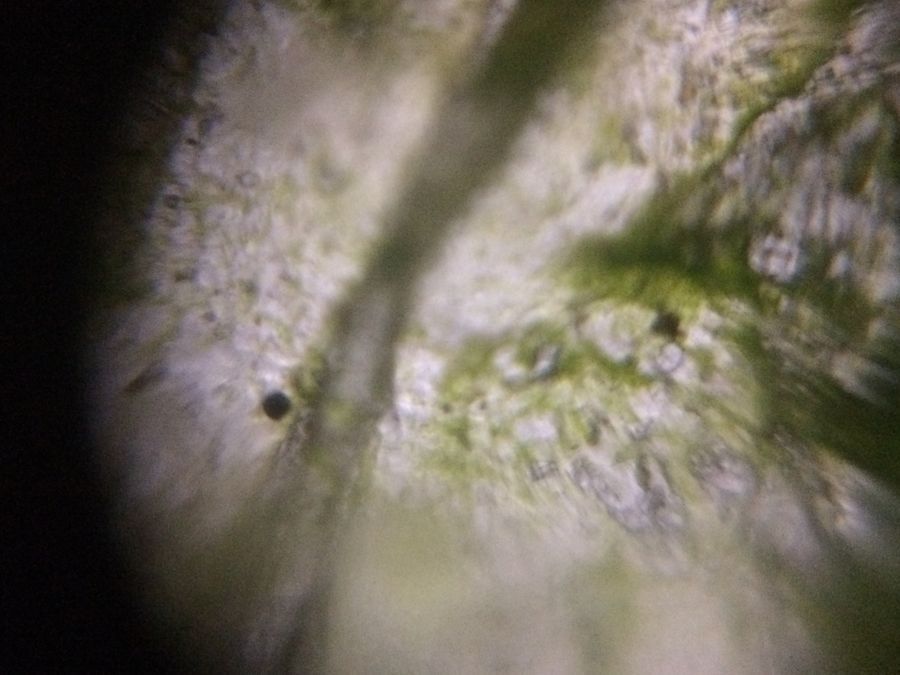
Upper epidermis of chilli leaf
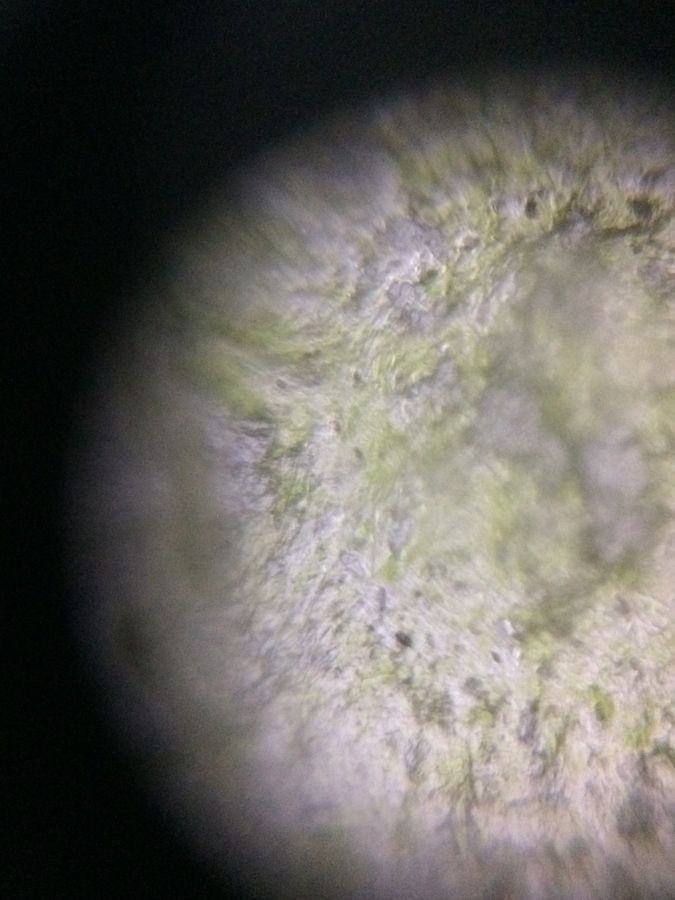
Lower epidermis of chilli leaf
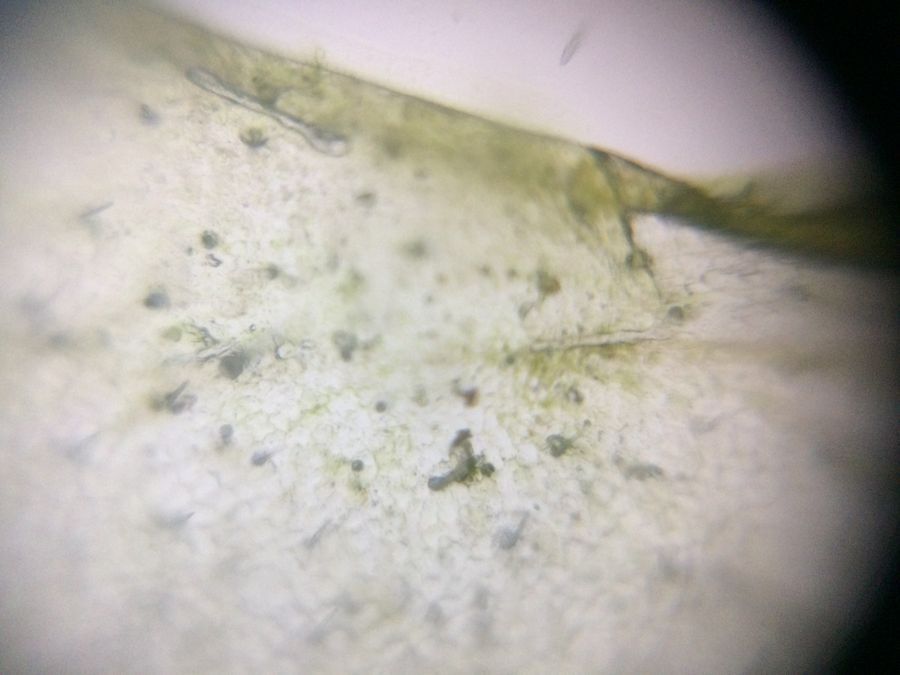
Upper epidermis of tomato leaf
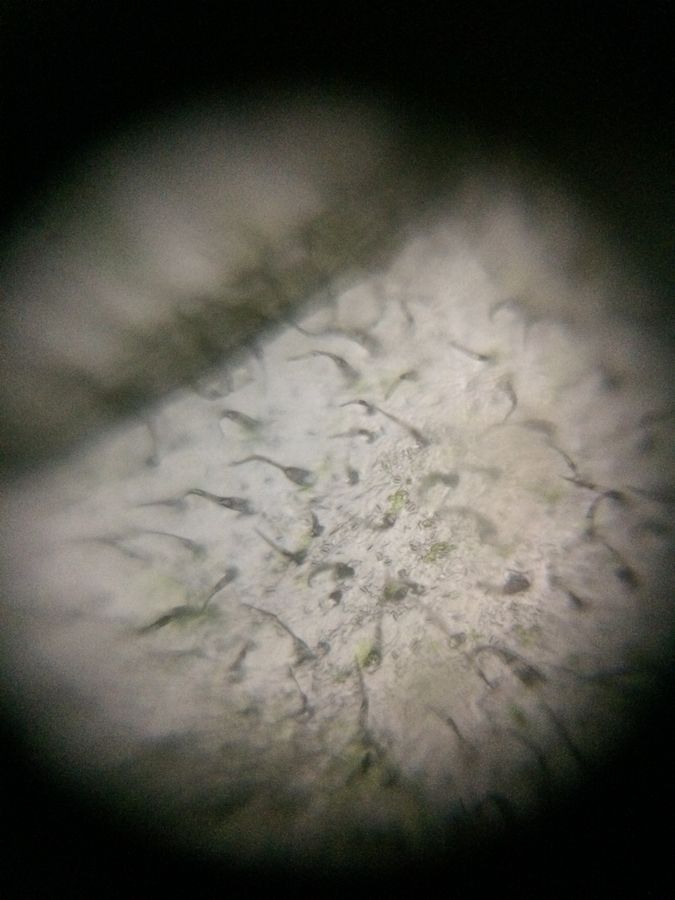
Lower epidermis of tomato leaf At this point, I stopped my observations and started checking my findings by searching on the internet. I learnt that dicot plants do have stomata on the upper epidermis and, in order to control transpiration, trichomes are produced (on both upper and lower epidermis) to cover up the stomatal openings. This is very clear in tomato and chilli which both belong to the same family.
In Tridax too trichomes are produced. Looking at the lower epidermis image for Tridax, you see a few cases of one small cell in the middle and what looks like two big cells surrounding it. Initially, I considered these to be stomata. However, after some literature search, I concluded that these cells actually form the base of a trichome.
In Tridax too trichomes are produced. Looking at the lower epidermis image for Tridax, you see a few cases of one small cell in the middle and what looks like two big cells surrounding it. Initially, I considered these to be stomata. However, after some literature search, I concluded that these cells actually form the base of a trichome.

Lower epidermis of Tridax I enjoyed this vacation research with my foldscope. I welcome your suggestions and comments!
In the 3rd and final post for this short project, I will provide a comparative view of the monocots and dicots together.
Ashalatha
(with Debashree and Jayashree)
In the 3rd and final post for this short project, I will provide a comparative view of the monocots and dicots together.
Ashalatha
(with Debashree and Jayashree)
Sign in to commentNobody has commented yet... Share your thoughts with the author and start the discussion!

 0 Applause
0 Applause 0 Comments
0 Comments